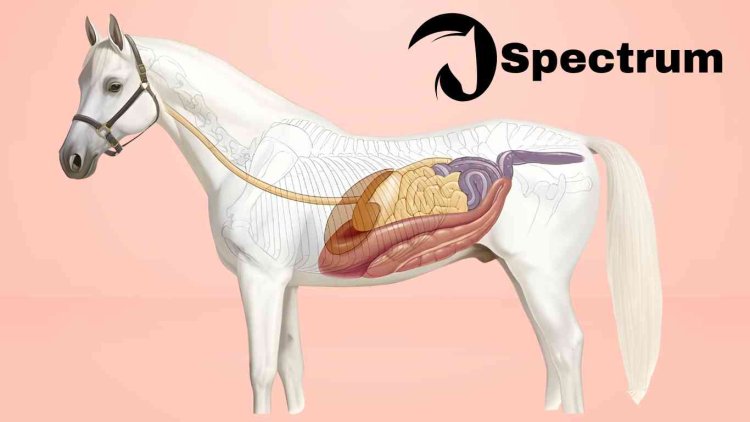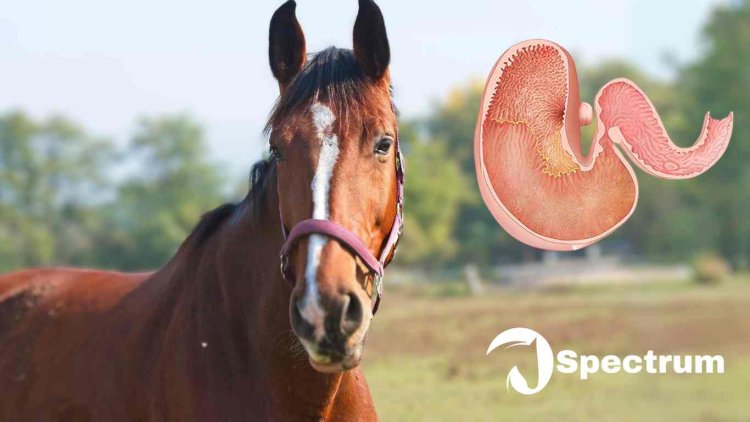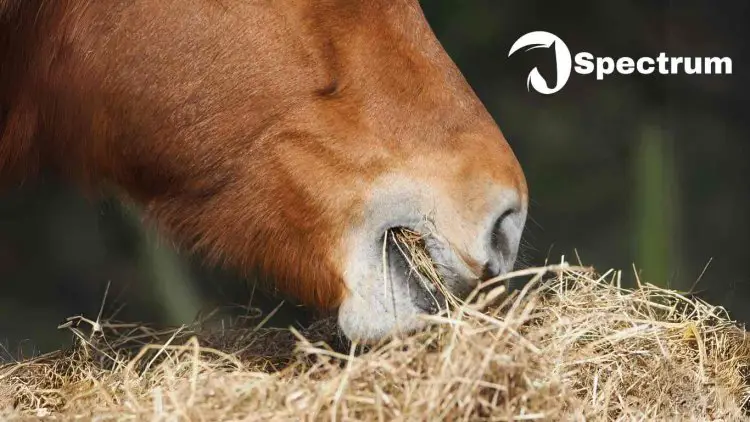How Many Stomachs Does a Horse Have?
Discover the intricacies of equine health in our latest blog post, "How Many Stomachs Does a Horse Have?" Understand the Equine Digestive System. Explore the truth behind common myths as we delve into how a horse's single-stomach system differentiates it from multi-stomached ruminants. Learn why this monogastric digestive trait, shared with humans, is key to maintaining horse health through proper nutrition. Get the facts on feeding and caring for these noble creatures by understanding their unique digestive journey from a small, singular stomach through to the extensive intestinal tract. Join us as we debunk misunderstandings and provide essential insights into the true nature of horse digestion, shedding light on their dietary management for optimal health and longevity.

Table of Contents
Introduction
How many stomachs does a horse have? This is not merely an intellectual curiosity but a question that carries significance when it comes to understanding the digestion process and the overall health of the animal. The digestive system of an equine differs from other ruminant animals like cows, which rely on a multi-compartment stomach for digestion. This article seeks to explore the intricacies of the equine digestive system and dispel common myths about horse digestion.
How Many Stomachs Does a Horse Have?

Contrary to popular belief, a horse only has one stomach. Unlike animals such as cows and sheep which are ruminants, equines have a monogastric digestive system, which means they have just one stomach compartment. This is a digestive trait shared with humans. Understanding this system is vital to providing the correct diet for these magnificent creatures.
Understanding the Ruminant and Herbivore Digestive System
When it comes to digestion, ruminant animals have a distinct advantage over equines due to their unique four stomach compartments which allow them to break down hard plant matter more effectively. However, horses have evolved to thrive on a single stomach system. They are designed to graze and chew almost continuously, ingesting small amounts of food over a long period.
Stomach Structure and Functions in Horses
The horse's stomach is small and can hold roughly 2 gallons of digesta. It's responsible for starting the digestion of proteins through enzymes like pepsin and hydrochloric acid that it secretes. This complex process breaks down carbohydrates, amino acids, and fats for easier nutrient absorption further in the digestive tract.
Debunking common misconceptions about horse stomachs
Many people wrongly assume that horses may have multiple stomachs due to their prodigious ability to consume and process large quantities of hay and other fibrous feeds. But the reality is that horses only have a single small stomach and instead rely on a complex system of small and large intestines to extract the necessary nutrients from their feed.
Difference Between a Horse's and a Ruminant's Stomach
| Feature | Horse's Stomach | Ruminant's Stomach |
|---|---|---|
| Number of compartments | One (simple stomach) | Four (rumen, reticulum, omasum, abomasum) |
| Type of fermenter | Hindgut fermenter | Foregut fermenter |
| Primary site of fermentation | Large intestine | Rumen |
| Food breakdown process | Fermentation primarily occurs in the cecum and colon | Fermentation begins in the rumen before the true stomach |
| Diet | Herbivores with a diet consisting mostly of fibers | Herbivores that can eat a wide variety of forages and grains |
| Method of digestion | Consumes feedstuffs that are fermented by microbes later on | Consumes feedstuffs that are fermented by microbes initially |
| Chewing of cud | Does not regurgitate and chew cud | Regurgitates and re-chews cud, a process called rumination |
| Digestive efficiency | Less efficient in digesting fibrous materials | More efficient due to the longer fermentation process |
| Anatomical complexity | Relatively simple digestive system | Complex digestive system with specialized compartments |
| Vulnerability to bloating | Less susceptible to gas buildup and bloating | More susceptible due to the fermentation process in the foregut |
| Typical representatives | Horses | Cattle, sheep, goats, deer, and antelopes |
Digestion in Horses: From Esophagus to Rectum
The Role of the Esophagus in Horse Digestion
Part of the horse's digestive system, the esophagus, plays an important role in food ingestion. It takes every morsel the horse eats and sends it down into the stomach with a reflexive one-way movement. The esophagus's sphincter muscle prevents the horse from vomiting—a vital adaptation protecting it from potential gastric acid damage.
Navigating the Horse's Stomach and Small Intestine
Once inside the stomach, further breakdown of food particles takes place. The upper stomach produces gastric acid and enzymes to digest proteins, whilst the lower part mixes this with incoming feed. The stomach can only hold small quantities of food at a time, meaning that horses need to eat little and often. The partially digested food—now known as chyme—then passes into the small intestine, where the majority of nutrient absorption occurs.
Understanding the Function of the Rectum in the Equine Digestive System
The rectum, essentially the end of the digestive line, is where indigestible materials become fecal balls to be excreted. This process signals not only the end of the equine digestive process but also helps to maintain the health of the entire digestive tract.
How Does a Horse Digest His Food?
Grinding and Chewing - The First Step to Digesting Food

The process of food digestion in a horse starts in the mouth. When a horse eats, it uses its teeth to grind food into smaller particles that are easier to swallow. Saliva, rich in digestive enzymes and bicarbonate, is produced to moisten the food for swallowing and begin the process of breaking down carbohydrates.
Small Intestine: Where Nutrients Are Absorbed
In the equine digestive system, the small intestine, measuring about 70 feet in length, plays a significant role. It's responsible for the absorption of proteins (amino acids), fats, and some vitamins and minerals. Carbohydrates are also broken into smaller sugars and subsequently absorbed within the small intestine.
How Long Does It Take for a Horse to Digest Food?
Following swallowing, food passes relatively quickly through the stomach and small intestine within a few hours. But the total process, from consumption to excretion, typically takes about 36-72 hours, depending on the type and quality of the feed and the individual horse's metabolism.
A Closer Look at the Complex System of the Large Colon
The Large Colon: A Crucial Part of the Digestive Tract
The large colon, along with the cecum, is where the majority of fiber digestion occurs. The colon promotes further breakdown of food particles through bacterial fermentation. As a result, volatile fatty acids—major sources of energy for the horse—are produced.
Special Role of the Cecum in Equine Digestion
The cecum, a large blind-ended sac found between the small intestine and colon, houses billions of microbes, including bacteria and protozoa. Thanks to these microbes, the cecum is a fermentation vat where bacterial enzymes break down fibrous feeds.
The End of the Line: Understanding the Small Colon
The small colon is the final section of the horse’s digestive tract. It absorbs any remaining water from the digesta, turning it into a more solid fecal form.
Role of Hindgut in Horse Digestive System
The Hindgut - More Than Just a Digestive Organ
The hindgut, composed of the cecum, large colon, small colon, and rectum, serves more than a digestive role in equines. It acts as a formidable line of defense against disease, promoting immune function. It also supports the regulation of water and electrolyte balance.
What Role Does the Hindgut Play in Horse Digestion
The hindgut, a key area in the horse digestive system, is responsible for the fermentation of fiber (a type of carbohydrate that is undigestable by the body) by billions of bacteria and protozoa. The products of fermentation are used as vital energy sources for the horse. This process, however, is slow and explains why horses graze for a long period daily.
Ensuring a Healthy Hindgut: Care and Management
Ensuring a healthy hindgut is crucial in maintaining a horse's overall health. Regular feeding with high-fiber feeds such as hay or grass can help maintain the health of the hindgut. Overfeeding grain or other concentrates can result in a rapid decline in hindgut health, leading to problems such as colic and laminitis. Therefore careful dietary management, including the rate of feed intake, is fundamental.
FAQs
Do horses have two stomachs?
No, horses do not have two stomachs. They have a unique digestive system that is composed of a single stomach, designed to process small, frequent meals. Unlike ruminant animals such as cows and sheep that have multiple chambers in their stomachs to ferment and break down plant materials, a horse digests feed in its small single-chambered stomach and small intestine before it makes its way into the large intestine, where fermentation occurs. The horse's digestive system is more akin to that of a human.
How big is a horse's stomach?
A horse's stomach is significantly smaller than one would expect for such a large animal. In general, it can hold around 2 to 4 gallons of material, which is approximately 7.5 to 15 liters. This is only about 10% of the total capacity of a horse's entire digestive system. The surprisingly small size of a horse's stomach is one reason why they eat small amounts throughout the day.
How long do horses take to digest food?
Horses have a unique and complex digestive system that requires a certain amount of time to process food. The entire digestive process, from consumption to waste elimination, can take anywhere between 36 and 72 hours. This timescale heavily relies on the type and amount of food consumed, with factors like fiber content significantly affecting digestion time. Horse owners need to monitor the diet intake and digestion process for the well-being of their equine companions.
Conclusion
Understanding how horses digest food not only gives clarity to how many stomachs a horse might have but also offers insights into their unique dietary needs and how to meet them. In conclusion, a balanced diet that takes into account the equine's singular but effective digestive system guarantees a healthy horse both inside and out.
What's Your Reaction?

















